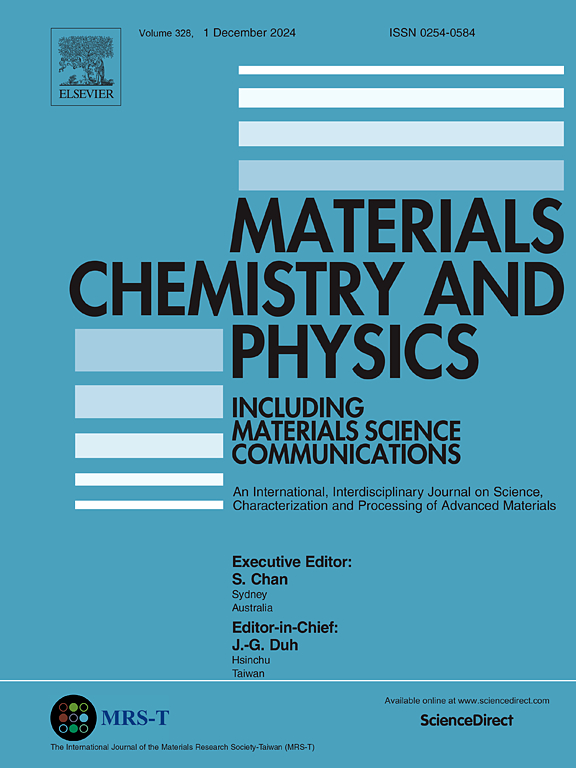战略性TCO选择:来自MTO/TCO双层耦合分析的见解
IF 4.3
3区 材料科学
Q2 MATERIALS SCIENCE, MULTIDISCIPLINARY
引用次数: 0
摘要
掺杂金属氧化物是一种用途广泛的材料,特别是作为透明导电氧化物(tco)和太阳能电池中的窗口层。当tco表现出电子传导时,窗口层充当半导体。尽管金属-半导体结的研究取得了重大进展,但实现这些双重作用的同源掺杂金属氧化物之间的相互作用在很大程度上仍未被探索。掺镁氧化锡(MTO)具有较宽的带隙,是一种很有前途的窗层材料。然而,MTO与各种tco之间的光电耦合仍然没有得到充分的了解。本研究研究了三种MTO/TCO双层结构:MTO/FTO(氟掺杂氧化锡),MTO/AZO(铝掺杂氧化锌)和MTO/ITO(氧化铟锡)。通过全面的结构、化学、形态、光学和电学表征,评估了MTO与不同tco耦合的影响。研究结果为这些材料之间的相互作用提供了有价值的见解,指导了最佳TCO的选择。这些发现有望提高下一代光伏器件的效率和稳定性。本文章由计算机程序翻译,如有差异,请以英文原文为准。
Strategic TCO selection: Insights from MTO/TCO bilayer coupling analysis
Doped metal oxides are versatile materials with diverse applications, particularly as transparent conducting oxides (TCOs) and window layers in solar cells. While TCOs exhibit electronic conduction, window layers act as semiconductors. Despite significant advancements in the study of metal-semiconductor junctions, the interplay between homologous doped metal oxides fulfilling these dual roles remains largely unexplored. Magnesium-doped tin oxide (MTO), recognized for its wide bandgap, has emerged as a promising window layer material. However, the optoelectronic coupling between MTO and various TCOs remains insufficiently understood. This study investigates three MTO/TCO bilayer configurations: MTO/FTO (fluorine-doped tin oxide), MTO/AZO (aluminum-doped zinc oxide), and MTO/ITO (indium tin oxide). Through comprehensive structural, chemical, morphological, optical, and electrical characterizations, the influence of coupling MTO with different TCOs was evaluated. The results provide valuable insights into the mutual interactions between these materials, guiding the selection of optimal TCO. These findings hold promise for improving the efficiency and stability of next-generation photovoltaic devices.
求助全文
通过发布文献求助,成功后即可免费获取论文全文。
去求助
来源期刊

Materials Chemistry and Physics
工程技术-材料科学:综合
CiteScore
8.70
自引率
4.30%
发文量
1515
审稿时长
69 days
期刊介绍:
Materials Chemistry and Physics is devoted to short communications, full-length research papers and feature articles on interrelationships among structure, properties, processing and performance of materials. The Editors welcome manuscripts on thin films, surface and interface science, materials degradation and reliability, metallurgy, semiconductors and optoelectronic materials, fine ceramics, magnetics, superconductors, specialty polymers, nano-materials and composite materials.
 求助内容:
求助内容: 应助结果提醒方式:
应助结果提醒方式:


